Studio Visit with Artist El Mayer at Connecticut College
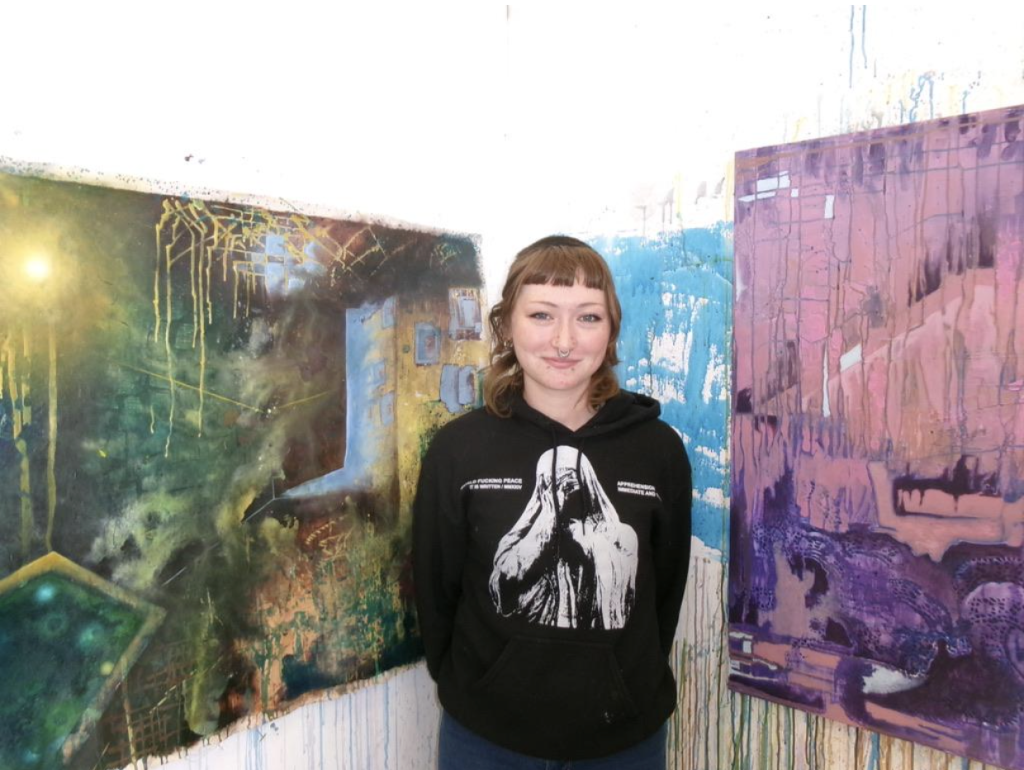
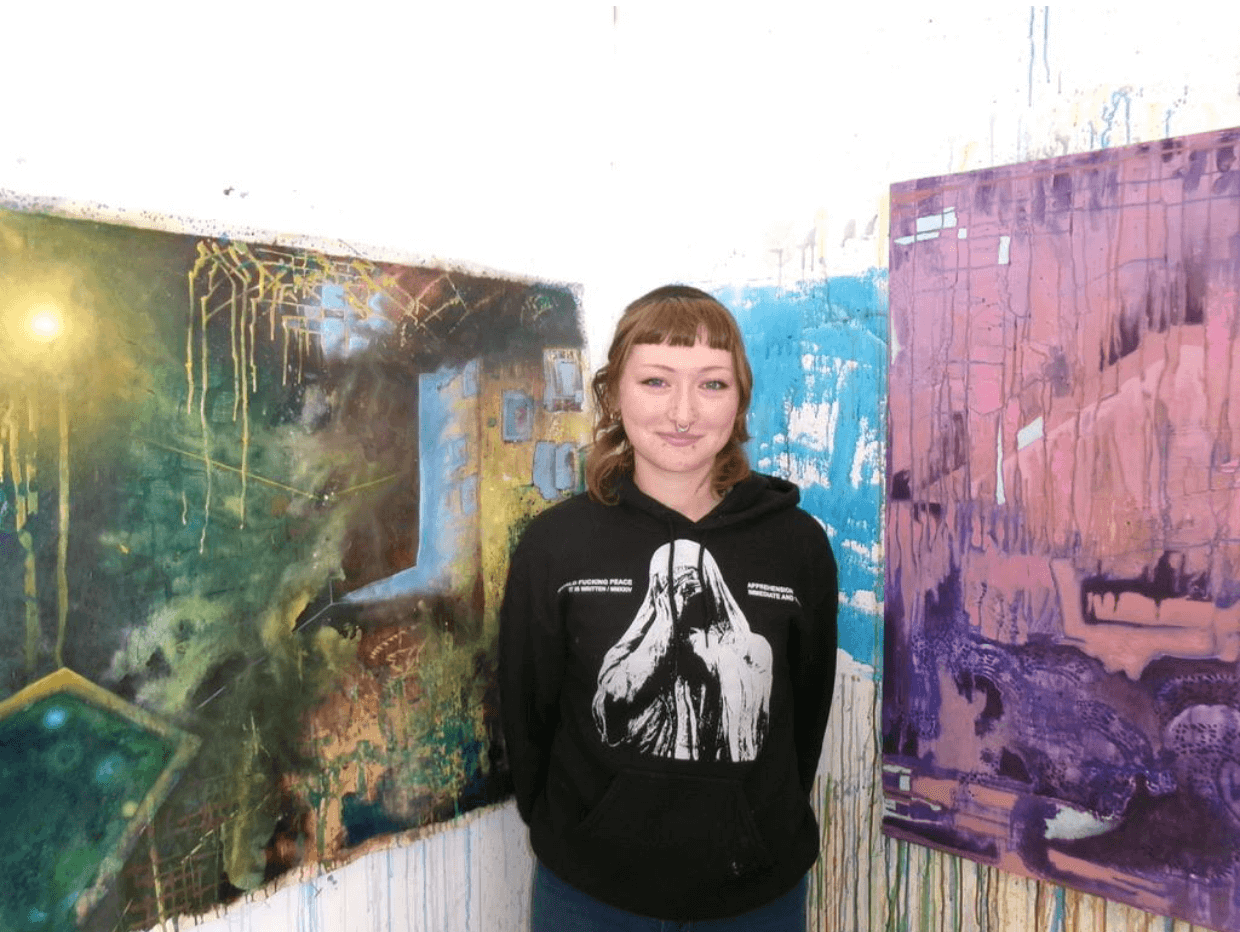
Walking into the basement of Cummings Art Center, it’s difficult not to compare Connecticut College senior El Mayer’s studio to those around her. Three white walls create a sort of artistic cubicle; other cubicles feature print-outs taped to the walls along with neatly placed paintings or pencil drawings. Mayer’s is absolutely covered in dripping paint.

Talk to me about how you got into doing art. What made you want to start?
I used to draw a lot of horses. It was a lot of, yeah, animal drawings of, you know those kids in school who just draw the eyes on their paper?
That was you?
Yeah, I would just draw all the time.
My eyes are drawn to the one print-out hanging on the studio wall, a picture of a brown horse standing in a field. “I kind of have a horse obsession, but it’s more than that. I have a job right now where I work at a farm and then I help with the horses. I take care of them, basically”. Mayer goes on to explain how when she arrived at Connecticut College, she intended to graduate as a physics major, but that it didn’t pan out. “It was kind of insane and too much for me and I just kept taking more art (classes). I was like, you know what? It’s just kind of going to happen. I’m going to be an art major”.
It’s not surprising that Mayer, 22, gravitated towards something less rigid than physics. When I ask her how she starts a piece, she explains that most of her work begins by layering on acrylic paint to cover the “too white” canvas. Layering and texture are huge parts of Mayer’s art style; she’s the only person I’ve ever heard get excited about watching paint dry.
There’s a lot of texture work in your stuff. Do the different textures signify something to you?
No not really, (texturing is) part of the process or first steps I do. It’s like the blank canvas and the flatness of it is what I want to get rid of. I have this modeling paste stuff. It’s like thick paint, basically. I’ll scrape it with a stiff brush to make ridges in the paint. I don’t know. I’ve just been really fascinated with how paint dries.
It seems to me, from what you’re describing, that you’re much more interested in the physical and tactile aspects of art rather than storytelling. How do you feel like storytelling plays into that?
I feel like when I make a painting, it is about the paint itself, but also I do have an idea that inspires that. I’m just not super focused on everybody else knowing what that idea is. I feel like my goal is just for people to just look at it and find something that’s interesting to them.
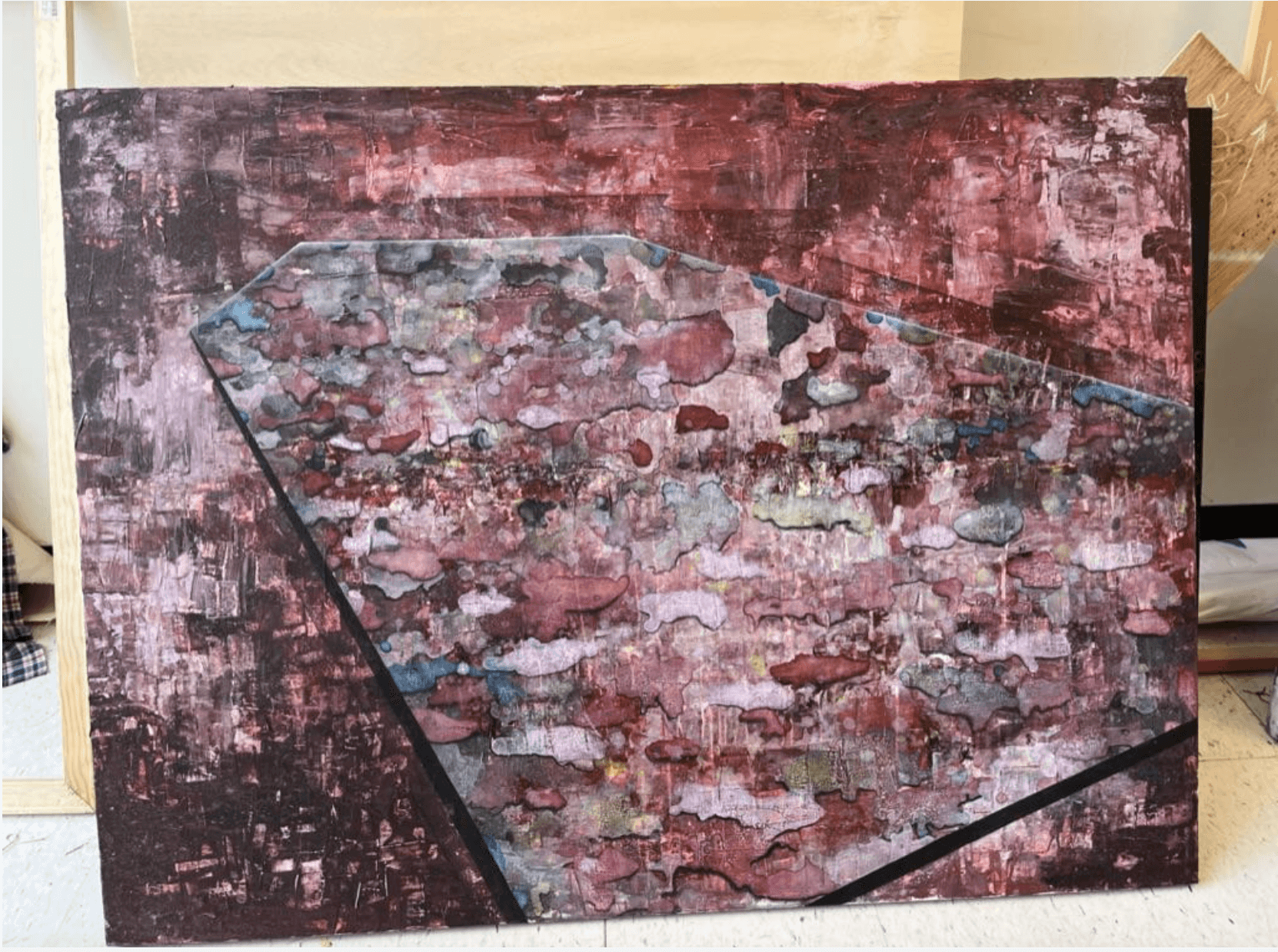
I find myself especially interested in a large flesh-colored painting leaning against the wall. “That’s the one I finished on Monday”, Mayer remarks. “I had this idea. I feel like the weeks are going by so fast, and they’re all the same, and I’m doing the same things over and over again. And I’m like, stuck in place, but also everything is going really fast at the same time. That’s the idea I had and I wanted to do a plane like floating in some space and then have little pools on it with poles sticking up out of them and moving. That didn’t happen with this one, but I’m really happy with the outcome of it”.
Your art examines life and death, decay, and industrialization. How do you explore the juxtaposition between the natural and man-made worlds in your work?
(Pointing at the untitled piece below) I mean, for this one the reason I put the red cylinders in is because the middle of it just looked kind of flat and I wanted to put something on the road going into the distance. And I guess, the shape was just different enough from the other shapes that I had going on that it was interesting.
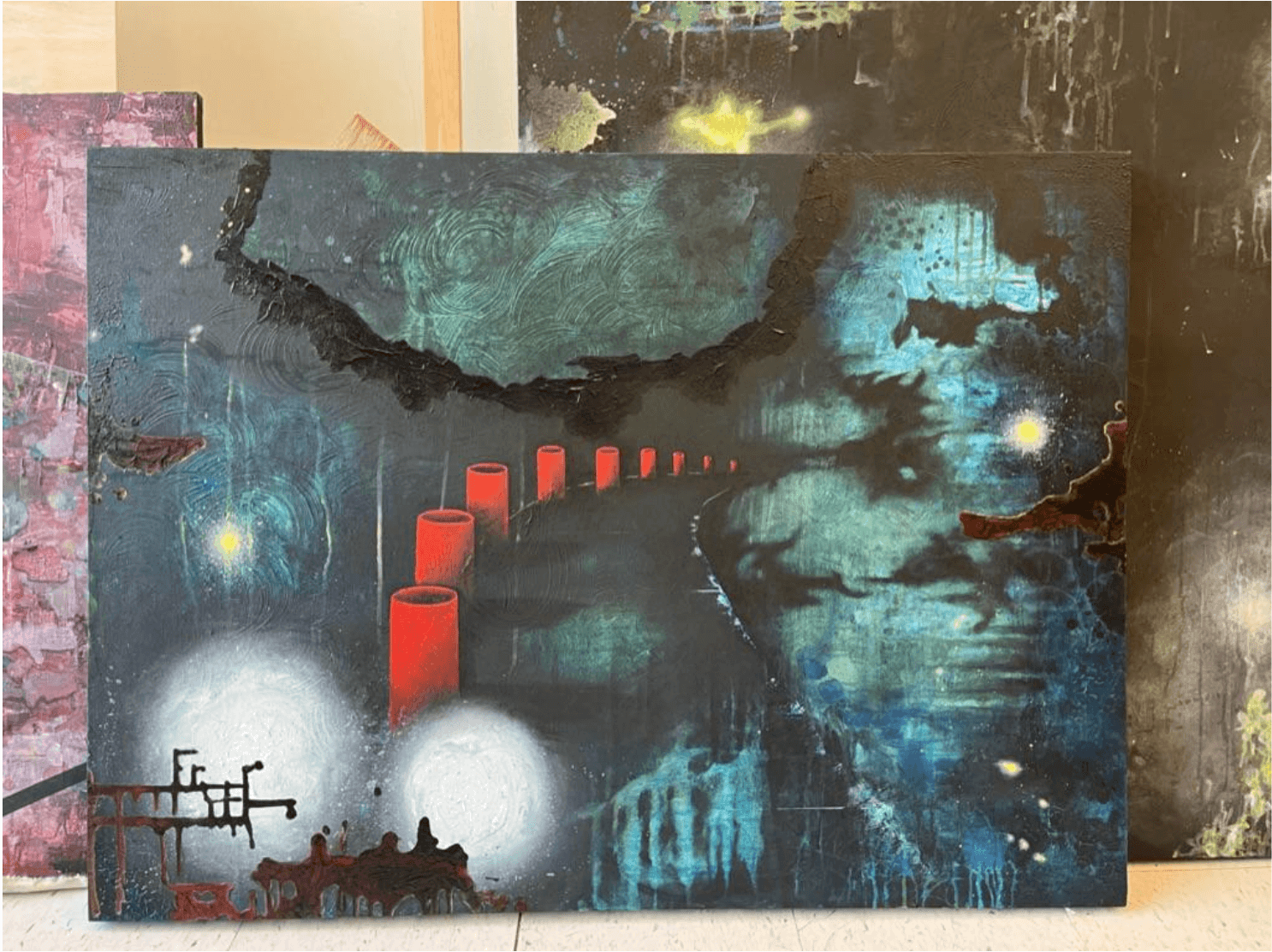
Do you feel in every one of your pieces you try to have at least one thing that’s contrasting the rest?
I would say so, yeah. I think about my stuff in layers kind of. I’m imagining what it’s going to look like at the end and how I’m going to get there.
What is with the dark color palette, is it purposeful?
Yeah, I don’t even know. I think the darkness is just kind of good for contrast sometimes. I know it doesn’t look like it, but I’ve been using a lot more lighter colors. And then, I feel like the darkness just kind of happens. Also sometimes I use my water that I wash my brushes in and then it turns kind of muddy. And then I’m like, I could drip that on there, and it just turns kind of dark.
What I’m hearing is that when you’re going to make these paintings you’re really thinking about the practicality of: I want light and dark, I want contrast, I want these layers, I want texture.
Yeah, and I’m also thinking about the paint itself. Like, sometimes it dries weird and I don’t know what I’m expecting. It’s like an experiment, kind of. And sometimes I can try to make it dry a certain way or do something I want, but it does something else. And I’m like, all right, I’ll just work with that I guess.
Tell me about this one, “The door opened on a summer night and the warm air reminded me of winter”.

This one people had a lot of different associations with a lot of things; because there are more like, I wouldn’t say recognizable objects, but there are shapes. Yeah, this is a bar that I go to sometimes. And it was a moment I had over the summer where it was kind of really gross and hot out, and then the door opened and I was like, oh, that’s like winter outside. It was a weird moment, so I kind of wanted to recreate that. So, going into this one I knew I wanted to paint a place.
Which bar is it?
It’s the Horsebrook.
The horses! It all comes together.
It’s like a dive bar kind of thing. It’s actually really cool, I enjoy it a lot.
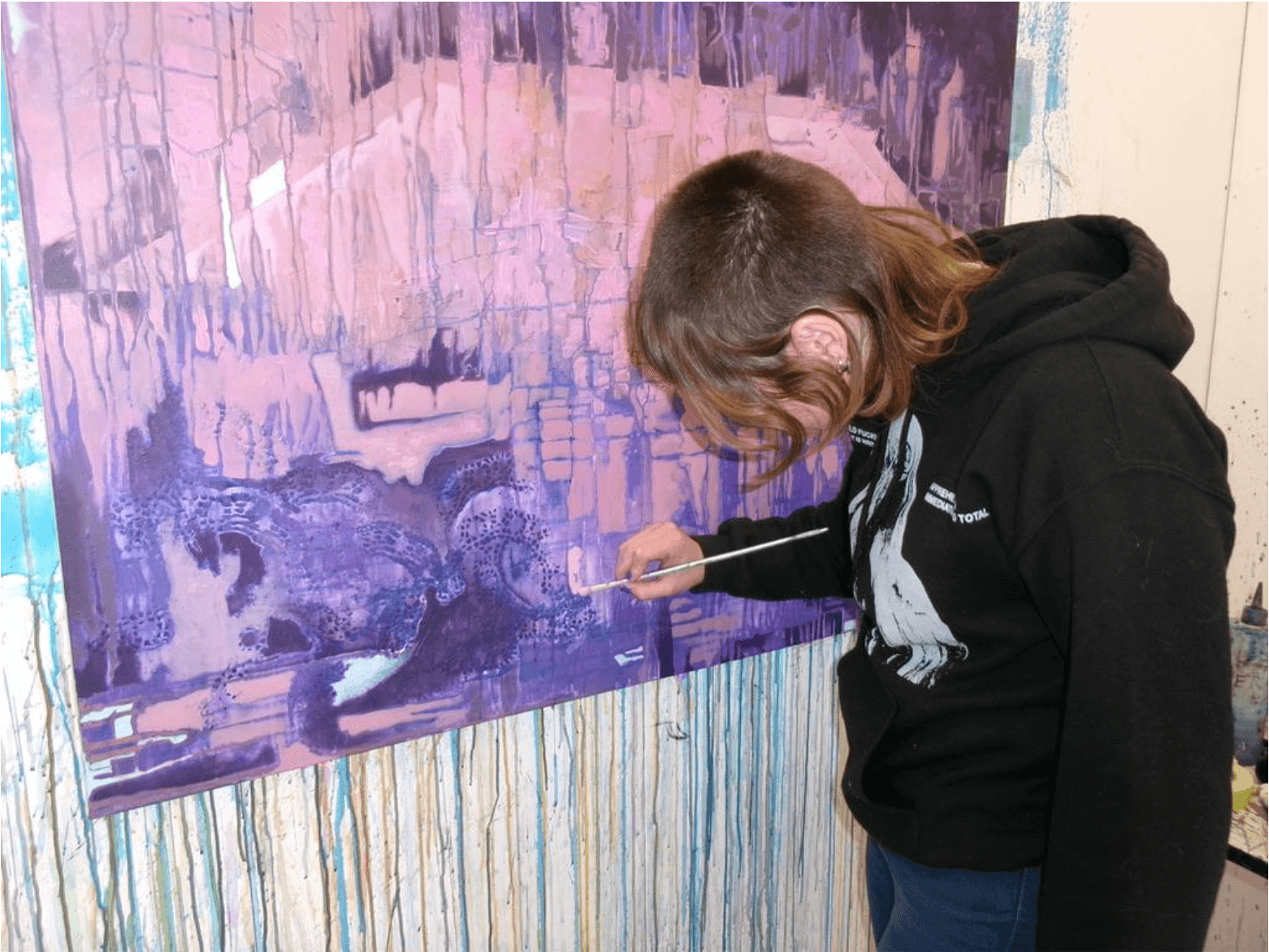

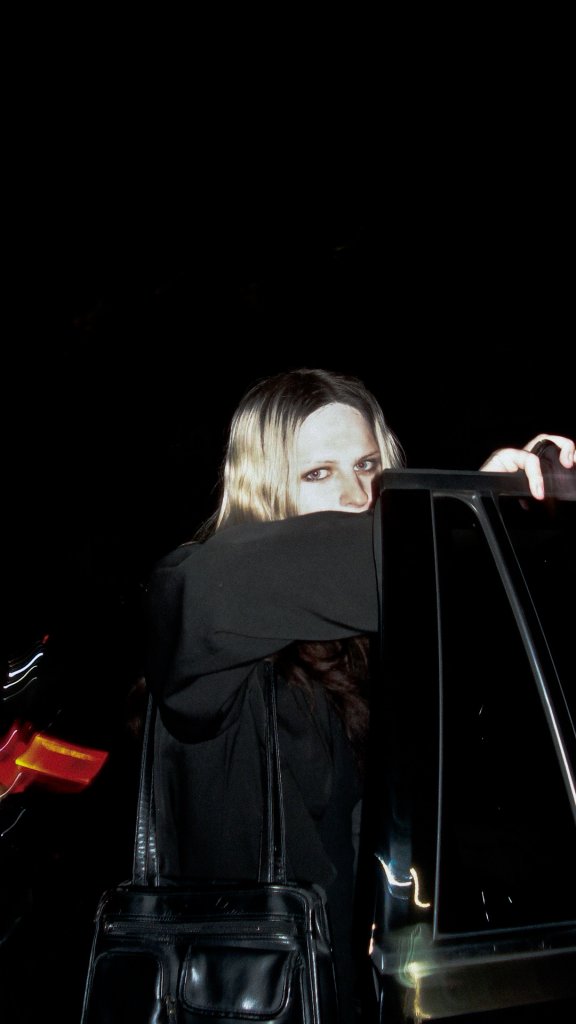
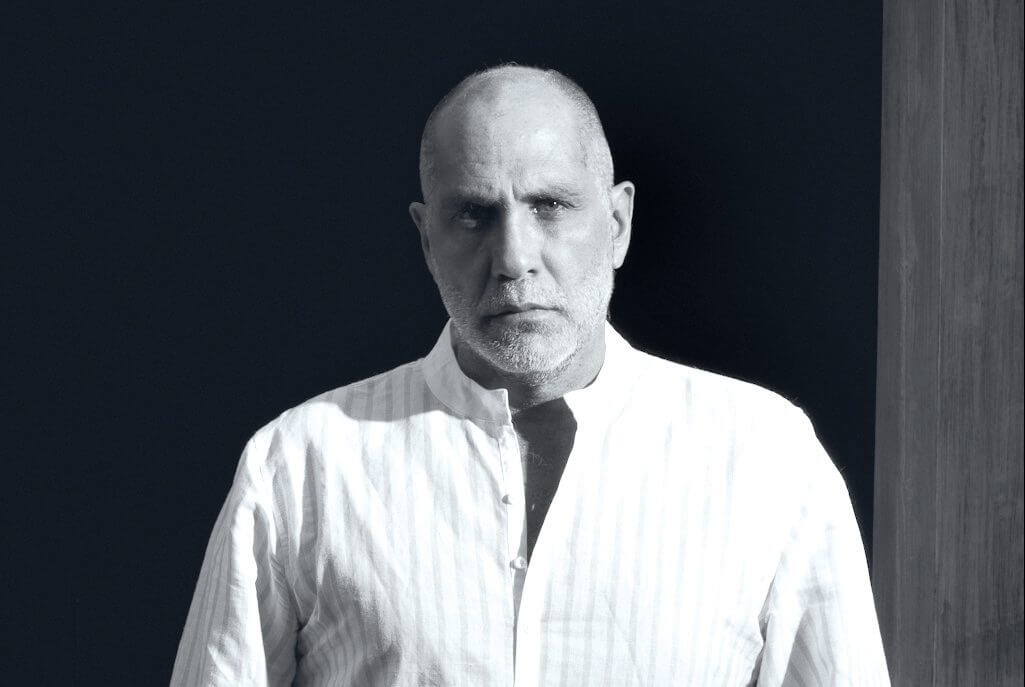
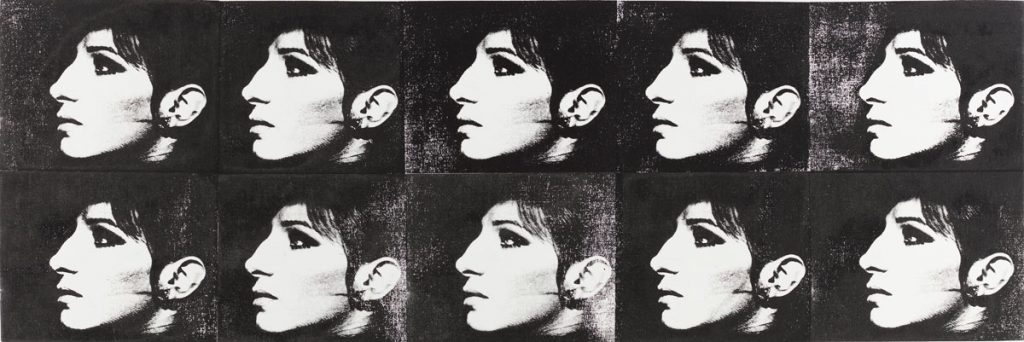
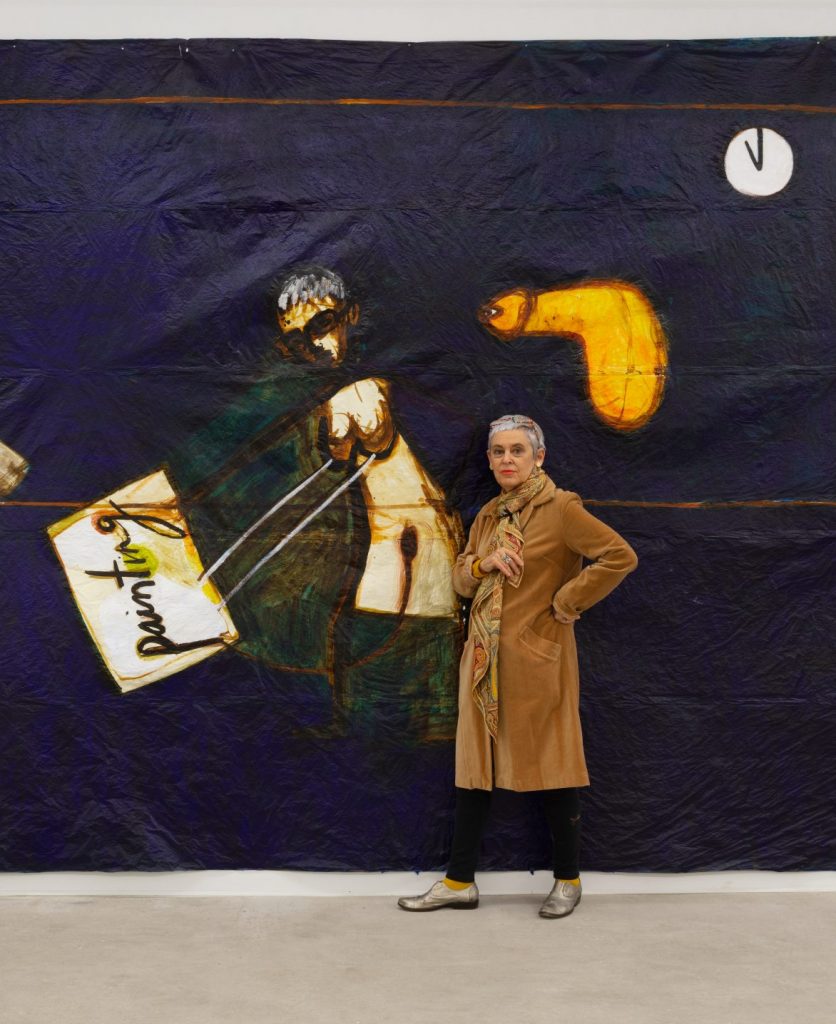
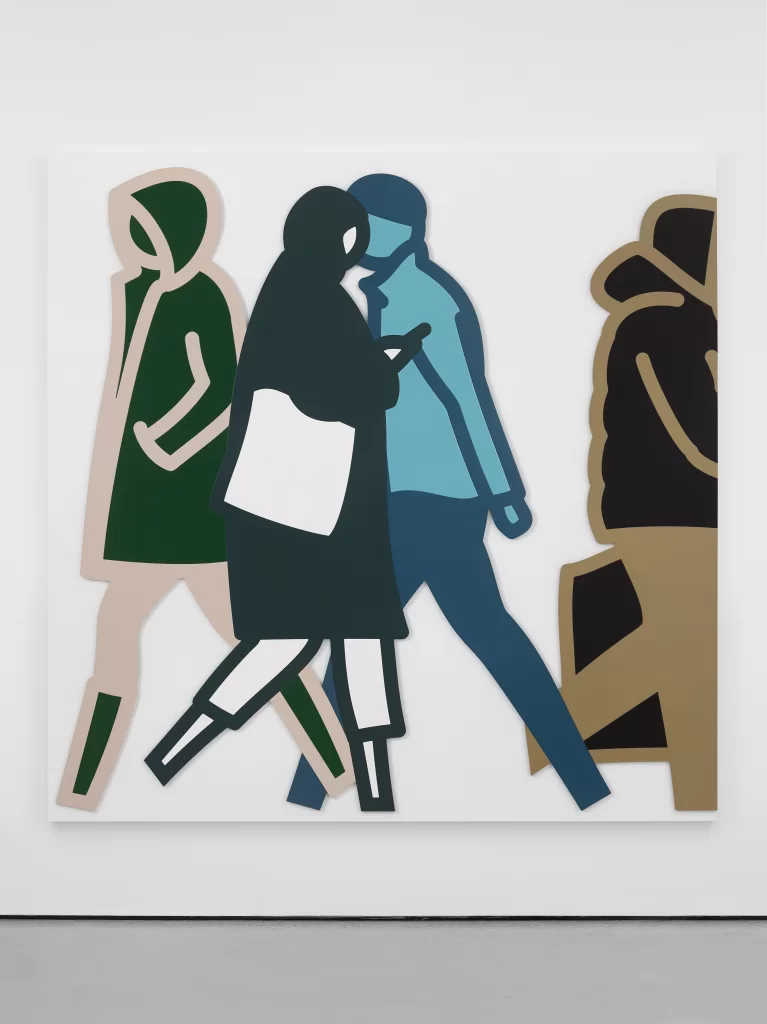
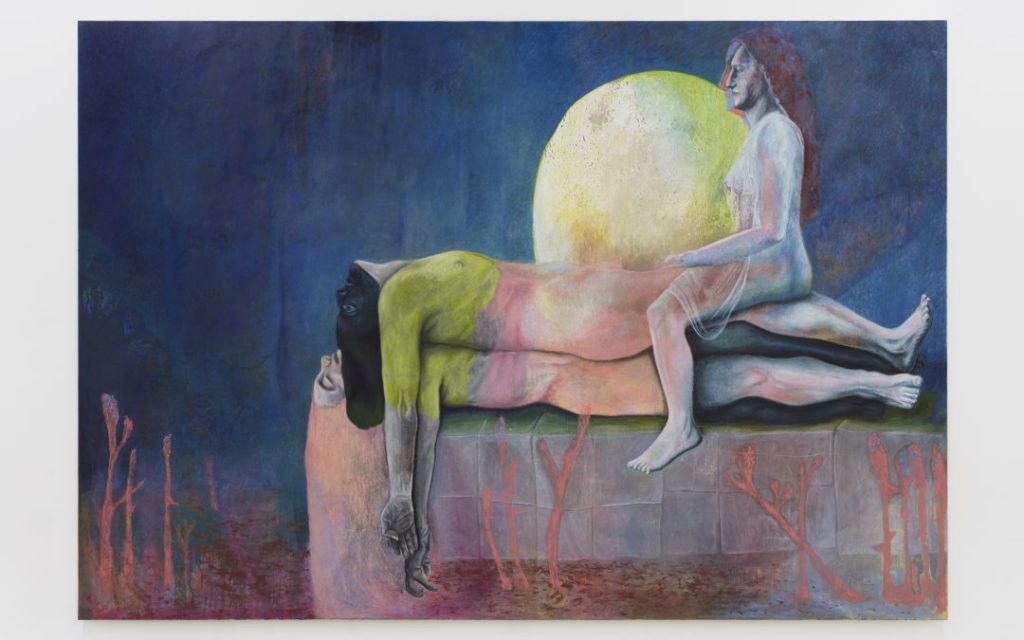
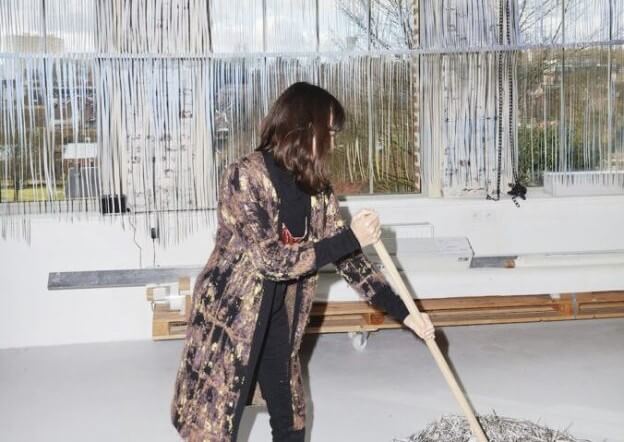
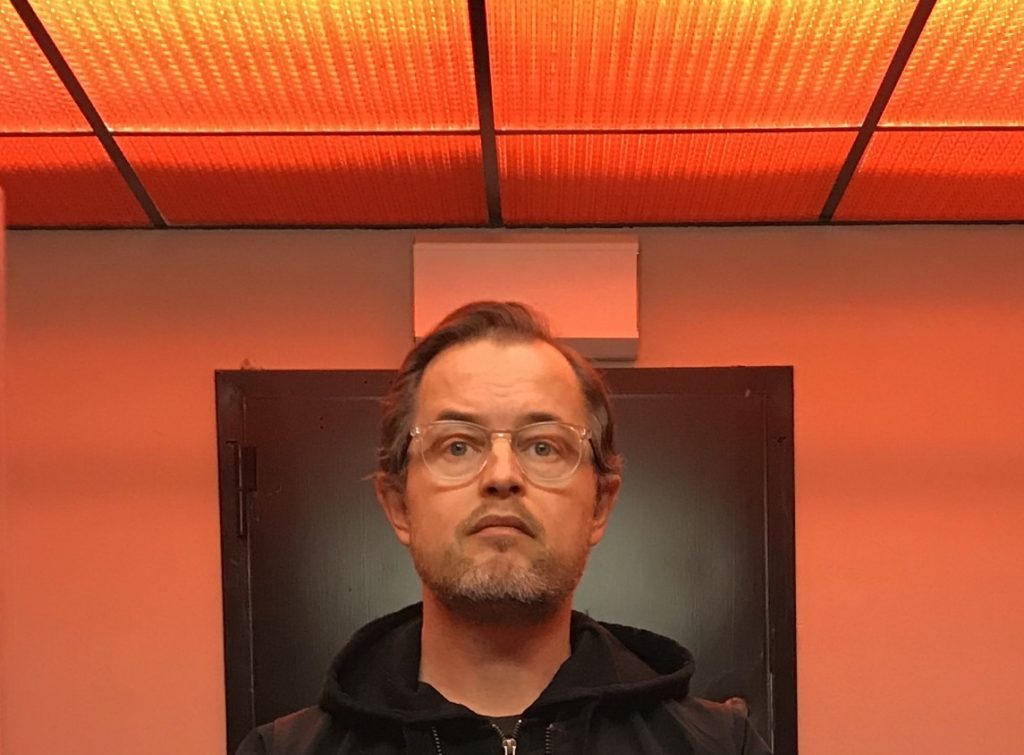
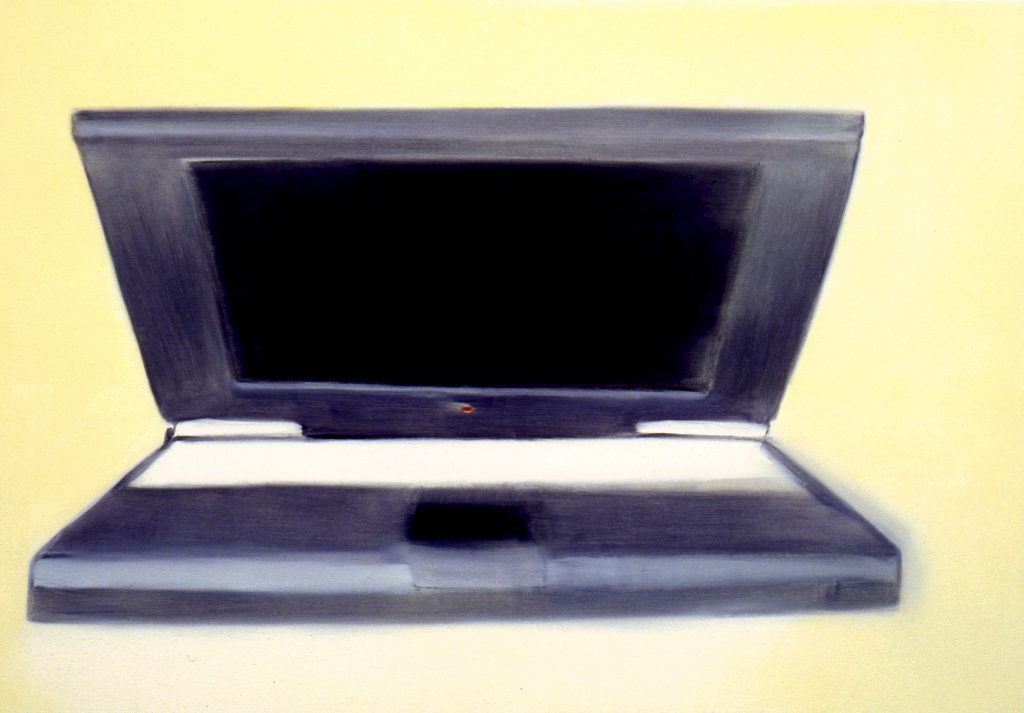
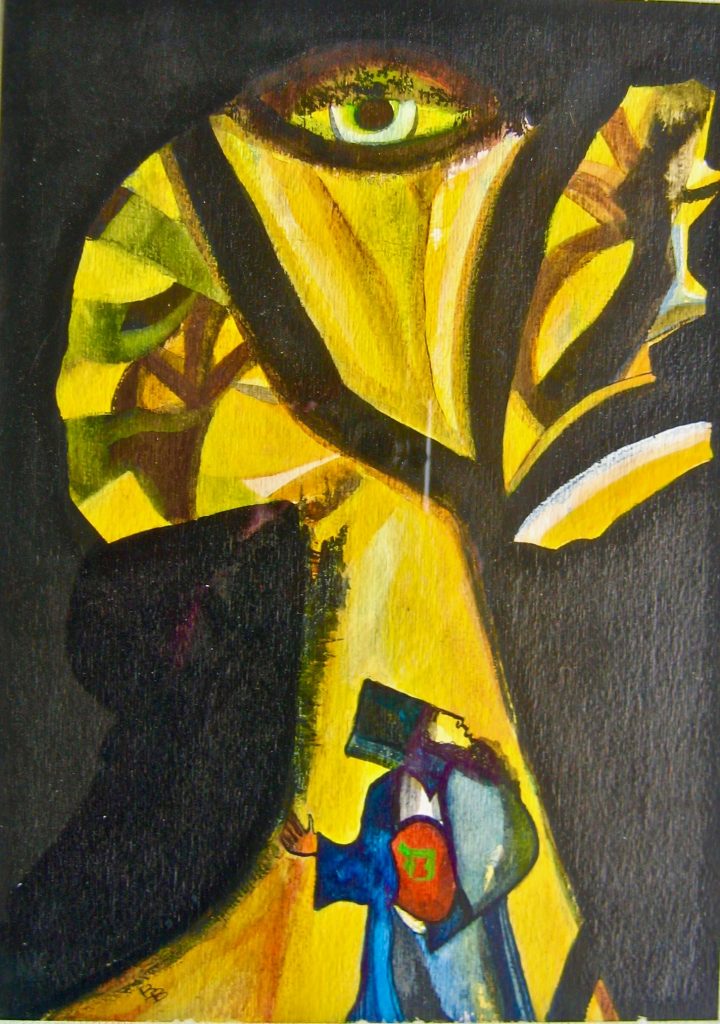
Responses